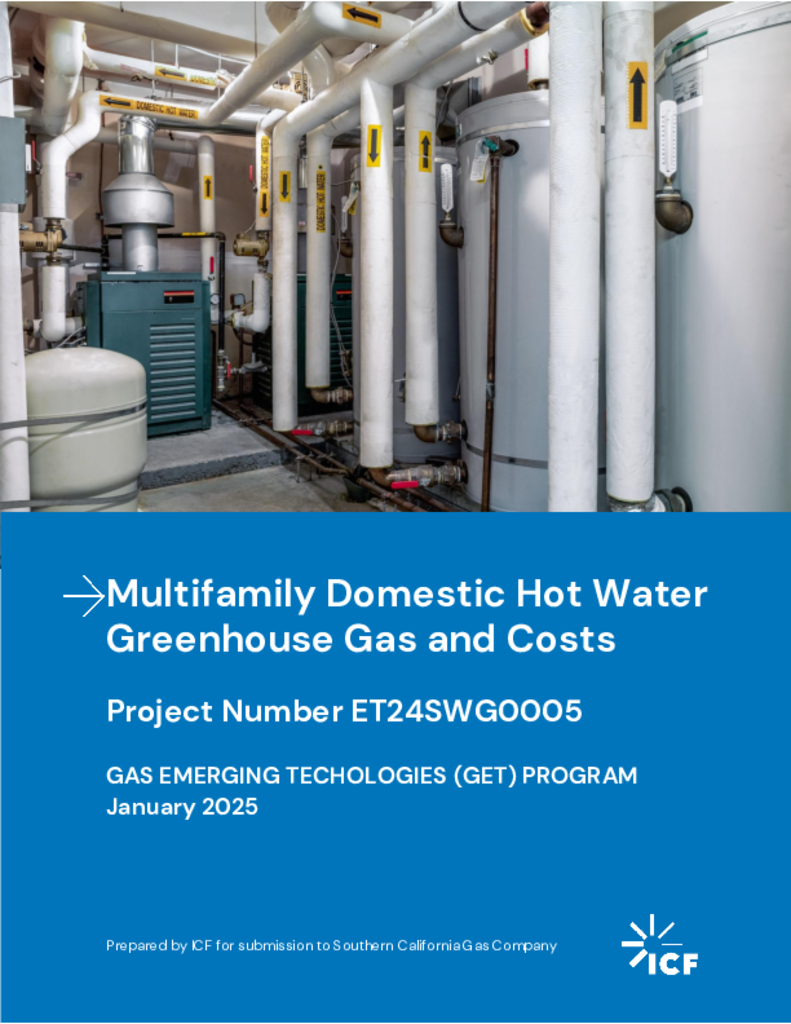ET24SWG0005 - Multifamily Hot Water Heating GHG and Costs
Based on results from a previous modeling study on Dual Fuel Single-Family Heating (ET23SWG0005) where the cost to run an electric heat pump was 68% - 144% more than a gas furnace, the GET team believes that installation of gas absorption heat pump (GAHP) water heaters will save utility costs when compared with condensing gas-fired boilers and electric heat pump water heaters (EHPWHs). Additionally, based upon another GET study (ET23SWG0012) which investigates the sizing of heat pump water heaters, the GET Team believes that EHPWHs may have much larger up front capital costs in a multifamily retrofit due to the large amount of recommended storage tank volume. In many multifamily (MF) buildings, there is not enough space in existing mechanical rooms or boiler enclosures for the additional storage tanks, meaning an expensive roof installation is the only option.
This project is a modeling study of domestic hot water (DHW) systems in multifamily buildings using models based upon approved DEER prototypes. MF models used in this study will be the best available prototypes: either DEER models themselves, or DEER models modified to include DHW primary and recirculation loops. This project will model the therm, kW and kWh use of the following technologies:
1. 84% efficient gas-fired boiler
2. Condensing gas-fired boiler
3. Gas absorption heat pump (GAHP) water heater (preheating make-up only and preheating make-up plus reheating recirculation water)
4. Electric heat pump water heater (EHPWH)
Technology #1 above (84% efficient gas-fired boiler) will serve as the baseline model.
Technologies #2-#4 will serve as the measure-case technologies.
The objectives of this project are to compare the following metrics across condensing gas-fired boilers, GAHPs, and EHPWHs technologies for two (2) different MF rate tariffs and all (16) California climate zones:
1. Utility costs
2. Capital costs
3. Return on investment (ROI)
4. Greenhouse gas (GHG) impacts
5. Total system benefit (TSB)

